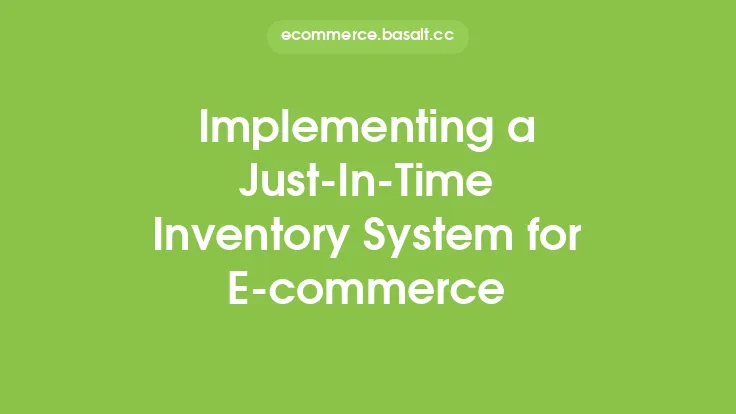Implementing a Product Information Management (PIM) system can have a transformative impact on e-commerce businesses, enabling them to manage and leverage their product data more effectively. A PIM system is a centralized platform that allows businesses to collect, manage, and disseminate product information across various channels, ensuring consistency, accuracy, and completeness. By adopting a PIM system, e-commerce businesses can reap numerous benefits that can help them stay competitive, improve customer satisfaction, and drive revenue growth.
Introduction to PIM Benefits
One of the primary benefits of implementing a PIM system is the ability to centralize product data management. With a PIM system, businesses can store and manage all product-related information in a single repository, eliminating data silos and reducing the risk of errors and inconsistencies. This centralized approach enables businesses to maintain a single source of truth for product data, ensuring that all stakeholders, including customers, sales teams, and marketing teams, have access to accurate and up-to-date information. By centralizing product data management, businesses can improve data quality, reduce manual errors, and increase operational efficiency.
Enhanced Data Quality and Consistency
A PIM system helps ensure that product data is accurate, complete, and consistent across all channels. By automating data validation and normalization, businesses can eliminate errors and inconsistencies, ensuring that product information is presented correctly and consistently. This, in turn, helps to build trust with customers, who are more likely to make informed purchasing decisions when they have access to accurate and reliable product information. Moreover, high-quality product data enables businesses to improve their search engine optimization (SEO) efforts, making it easier for customers to find products online.
Improved Operational Efficiency
Implementing a PIM system can significantly improve operational efficiency by automating many manual tasks associated with product data management. With a PIM system, businesses can automate tasks such as data entry, data validation, and data syndication, freeing up resources to focus on more strategic initiatives. Additionally, a PIM system can help businesses streamline their product content creation processes, enabling them to create and publish high-quality product content more quickly and efficiently. By reducing manual errors and automating routine tasks, businesses can improve productivity, reduce costs, and accelerate time-to-market for new products.
Better Customer Experience
A PIM system plays a critical role in delivering a better customer experience by providing customers with accurate, complete, and consistent product information. By ensuring that product data is up-to-date and consistent across all channels, businesses can help customers make informed purchasing decisions, reducing the risk of returns and exchanges. Moreover, a PIM system enables businesses to create personalized and engaging product experiences, tailoring product content to specific customer segments and preferences. By delivering high-quality product information and personalized experiences, businesses can build trust with customers, increase loyalty, and drive revenue growth.
Increased Revenue and Competitiveness
Implementing a PIM system can have a direct impact on revenue growth and competitiveness. By improving data quality, operational efficiency, and customer experience, businesses can increase conversions, reduce returns, and improve customer loyalty. Moreover, a PIM system enables businesses to quickly and easily create and publish new product content, allowing them to respond more quickly to changing market conditions and customer preferences. By staying ahead of the competition and delivering high-quality product experiences, businesses can increase revenue, improve profitability, and maintain a competitive edge in the market.
Scalability and Flexibility
A PIM system is designed to scale with the business, providing the flexibility and agility needed to respond to changing market conditions and customer preferences. With a PIM system, businesses can easily integrate new channels, markets, and products, ensuring that product data is consistent and up-to-date across all touchpoints. Moreover, a PIM system enables businesses to adapt quickly to changing customer preferences and behaviors, allowing them to stay ahead of the competition and deliver personalized and engaging product experiences. By providing the scalability and flexibility needed to respond to changing market conditions, a PIM system helps businesses stay competitive and drive revenue growth.
Measuring the Success of a PIM System
To measure the success of a PIM system, businesses should track key performance indicators (KPIs) such as data quality, operational efficiency, customer satisfaction, and revenue growth. By monitoring these KPIs, businesses can evaluate the effectiveness of their PIM system and identify areas for improvement. Additionally, businesses should conduct regular audits and assessments to ensure that their PIM system is aligned with their overall business strategy and goals. By measuring the success of their PIM system and making adjustments as needed, businesses can ensure that they are getting the most out of their investment and driving long-term growth and profitability.
Conclusion
In conclusion, implementing a PIM system can have a transformative impact on e-commerce businesses, enabling them to manage and leverage their product data more effectively. By centralizing product data management, improving data quality and consistency, and delivering personalized and engaging product experiences, businesses can drive revenue growth, improve customer satisfaction, and stay competitive in the market. As the e-commerce landscape continues to evolve, businesses that invest in a PIM system will be well-positioned to respond to changing market conditions and customer preferences, driving long-term growth and profitability.





